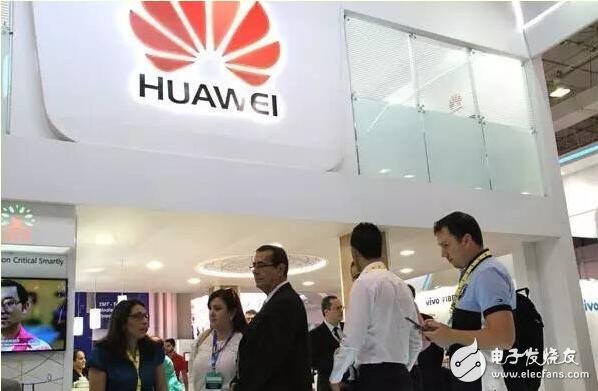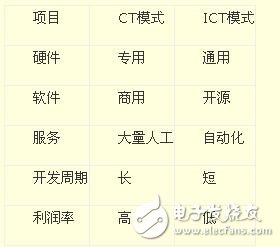In recent years, due to the success of Huawei mobile phones, many friends outside the technology circle mistakenly believe that Huawei is a mobile phone. In fact, Huawei's largest business is for telecom system equipment for operators: Huawei's 2015 revenue of 395 billion yuan, operator business accounted for 59%, is still the largest business segment.
In 2015, Huawei's carrier business revenue increased by 21.4%, and surpassed Ericsson a few years ago, becoming the world's largest telecommunications equipment supplier. It can be said that Huawei is now in a small position in the field of CT (communication technology).
However, things are often so wonderful, especially in the technology circle; when you are the boss, the world is invincible, it often means that terrible enemies emerge from the field you can't see. When Microsoft was invincible in the software field and saw who was destroying it, it unexpectedly popped up a Google from the Internet outside the software, almost subverting Microsoft's country; Nokia became the world's mobile phone boss, the time is impossible But it rushed out of an apple that had never done a mobile phone, forcing it to only sell to Microsoft...
Today, in the field of operators or telecom system equipment, Huawei has no rivals, but new rivals have emerged from other fields: If the old man said that Amazon and Google will become Huawei's competitors in the future, do you believe it?

This is because ICT (Information and Communication Technology) is killing traditional CT (communication technology). It may be that many people have heard the old sayings or they are confused. The following old people will give a living example in the community of Huawei's voice. The Huawei people say this:
On May 18th, 2016, at 23 o'clock local time, Indonesia's second largest operator, XL Office, was silent. "There are users online!" A burst of cheers suddenly burst into thunderous applause. This means that Huawei Cloud EPC (Cloud 4G core network) officially kicked off the world's first large-scale commercial relocation, and also announced to the industry that NFV (network function virtualization) large network commercial era officially arrived, and laid the foundation of our company Cloud EPC is a commercial leader in the field of NFV.
XL is a subnet of the Malaysian Axiata Group, the second largest mobile operator in Indonesia with over 50 million registered users. In 2014, in order to realize the transformation of CT to ICT, XL issued a net change tender. In the end, we entered the short list of LTE/EPC bids with the first place in the case of fierce competition among many friends, but we have not had time to raise our glasses, but the project team was urgently notified by customers, all bids. The solution must be "on the cloud" to enable NFV commercialization.
What is the difference between clouds and clouds? For a long time, the design and development model led by equipment suppliers is their own dedicated hardware plus special software, just as Apple's mobile phone can only use Apple's system. After clouding, hardware and software can be decoupled, and operators can use a general-purpose server to install software provided by different vendors. Moreover, the traditional core network equipment has a limited capacity. What we see is a row of cabinets. When more capacity is needed, a row of cabinets is manually added. But after clouding, these cabinets have turned into "liquid robots" that are freely deformable, elastically stretchable, and ready to flow. Wherever you need to go, there is no shortage of capacity. As a result, the original fixed structure is now gone, and all the data is running on the "cloud."

The customer's needs are urgent, but for the suppliers, it is not very good, we are faced with too many "short boards": At that time, our EPC has almost no share in XL, and the EPC cloud solution is still in place. In the experimental stage; many feature delivery solutions are still communicated with the customer through the first-line personnel, and then repeatedly discussed with the development engineers after the alignment and dynamic integration; no delivery conditions; no mature products... whether it is our company or friends There is no precedent for commercial NFV in the world.
Friends X has been eliminated from the short list because it does not support cloudization. We have no choice, and this is an excellent opportunity to break through the operator's EPC market. We have no reason to give up. We must swear on the cloud. . In the face of the six-month delivery period, the service customer's baton is passed to the developers, we must quickly produce quality hardware and software products to meet the delivery needs.
The essence of NFV is the architecture, which directly determines the competitiveness of the product. This means we have to build a new architecture, a new platform. However, there will be many technical blind spots, which need to be deepened in the design and discussion of problems. In particular, performance specification design and research, covering a wide range, there is no boundary. Moreover, most system architects are involved in the design for the first time, not understanding the concepts of virtualization and cloud.
"Just know VM, another SPU, and RU; a few days ago, it was called NLS, and it was called VNFC in a few days..." I didn't know how to study, I was looking for someone to ask for information, and the whole design department set off to learn. upsurge. After learning, everyone knows that this architecture design, platform switching, changes can be described as skyrocketing.
But the plan does not wait for people, we do not have time to move forward slowly, from the beginning of learning to the completion of the design output, only a short period of more than two months. The most painful time is often the fastest growing, hard work pays off, with the cooperation of the product line colleagues, the Cloud EPC version is released as scheduled, the research and development progress has not become the bottleneck of the project.
In the face of the ICT transformation needs of telecom operators, Huawei appeared very unfamiliar, and finally made a great effort to get through the dangers. The question is, if telecom operators can find faster, lower cost ICT solutions, do they still need Huawei?
In fact, many European and American operators have already done this. At the end of 2012, 13 major European and American operators established the NFV standard group and began the cloud transformation of the telecom service bearer platform. The most radical of these is AT&T, a US telecommunications operator that has built a common NFVi hardware platform to decouple hardware servers from traditional communications services. From 2016, the original communications software will be clouded and migrated to This platform, this year, also plans to migrate the most critical applications, including core networks and billing systems, to the cloud.
In the past, most telecom operators were heavily asset-based, investing in wireless base stations, transmission, and data centers. Nowadays, Germany's largest operator, Deutsche Telekom, has not made any large-scale investment. Instead, it has built a computer room and only provides resources such as racks and power supplies. It is operated by introducing Internet cloud service providers such as Amazon AWS.
3 Mm /8 Mm Nano Tip,Electronic Board Marker Pen,Touch Board Marker Pens,Infared Smart Board Marker
Shenzhen Ruidian Technology CO., Ltd , https://www.wisonen.com